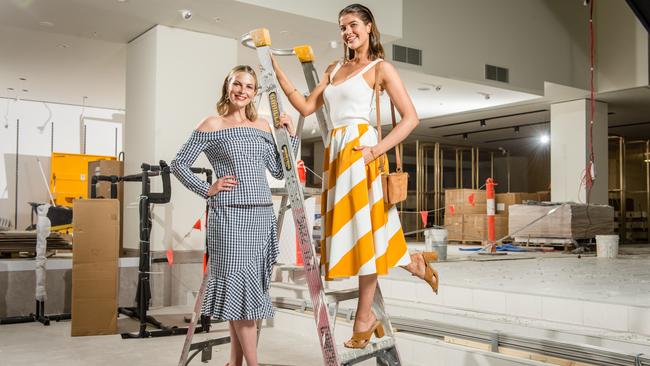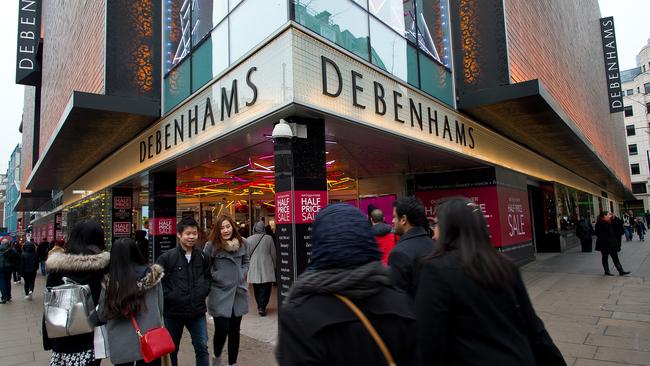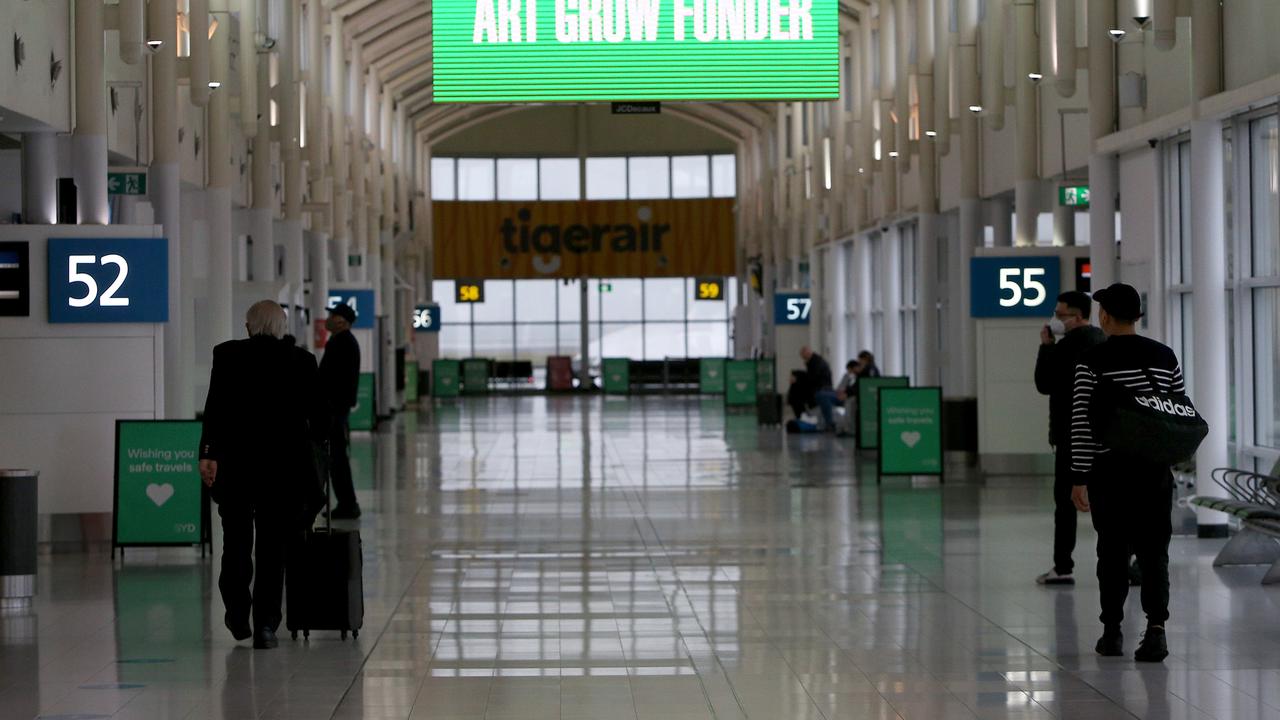Why did Debenhams’ Australian dream die?
Debenhams arrived in Australia, promising to deliver a new standard in department store fashion. Now less than two years later, it’s closing its doors. So how did the British retail giant’s Aussie dream unravel so quickly?

Business
Don't miss out on the headlines from Business. Followed categories will be added to My News.
The plan was to open up to 10 stores selling a curated range of fashion, beauty and homewares.
Instead, British department store chain Debenhams has become the latest casualty of a local retail sector that has notched up a body count to rival Game of Thrones.
The Australian arm of the 240-year-old department store chain this week announced it would close its only store, in Melbourne’s St Collins Lane arcade, early next year.
A major sale, billed as its “last ever winter stocktake”, is underway.
So what went wrong for the European interloper that less than two years ago opened the store with Queen’s Guards marching down Collins Street?
IT’S A DEPARTMENT STORE
We’re just not that into them anymore.
Few sectors of the retail industry have been as hard hit in recent years as department stores. And it’s not just an Aussie thing.
Indeed, department stores in the US and UK are faring even worse than ours as the rise of specialty retail and online shopping — the web is one big department store — raises real questions over their reason for being.

Given this backdrop, it was always a big ask to launch a new one into a market that was already struggling to support Myer and David Jones.
“I was surprised they even came into the country in the first place, to be very candid,” retail consultant Brian Walker tells Business Daily.
“The department store sector globally has been going through very tough times. It’s a lot to do with the rise of specialty retail and the rise of online.
“Those department store models have largely lost the very point of difference and focus they once had.”
FAST FASHION, SLOW ECONOMY
Debenhams touched down in Australia at a time when fast fashion giants — H&M, Zara and Uniqlo — were expanding and the economy was slowing.
The Melbourne store opened in October 2017. The city’s house prices peaked a month later, while low wage growth continues to weigh on consumer sentiment.
“Many consumers have reined in their spending, either searching out cheaper alternatives or avoiding purchases all together,” IbisWorld senior analyst Tom Miller points out.
A cautious consumer and the popularity of fast fashion brands has also created a “polarised” retail market that is squeezing out traditional mid-market department stores, Mr Miller says.
“Many consumers are increasingly buying the majority of their clothes and accessories from fast fashion retailers and then complementing these purchases with pieces from luxury fashion stores,” he says.
“While consumers are looking for discounts on the majority of their wardrobe, they are increasingly willing to splash out with these savings to purchase designer items.”
LOCATION, LOCATION, LOCATION
When Debenhams arrived here, a senior executive who oversaw the launch said the retailer would offer “exciting products and brands, combined with a world-class shopping experience”.
And yet, it was located in a basement — a very nice one, in the plush St Collins Lane shopping arcade, but still a basement.
Mr Walker, who runs retail consultancy Retail Doctor Group, describes the choice as “interesting”.
“It was a little hard to find and it was relying on being a destination — on customers seeking them out,” he says.
“In reality, department stores aren’t as destinational now as they once were.”
TROUBLES AT HOME
The Australian arm of Debenhams had been under a cloud since its British parent collapsed in April, falling into the hands of its lenders.
They have launched a rescue restructure, involving the closure of up to 50 stores and the shrinking of dozens of others from a network of 166.

That approach has sparked a messy legal battle with a major former shareholder.
Greenlit Brands, which operates Debenhams in Australia under a franchise agreement, referenced the UK collapse when announcing its closure this week.
“Due to change of control that has occurred at Debenhams UK, we believe that it is appropriate for us to start an orderly and managed process to cease this agreement,” Greenlit chief Michael Ford said in a statement.
“Our immediate focus is to support the Debenhams team members in Australia through this process and where possible, look at redeployment opportunities in the Greenlit Brands group once the business ceases to operate.”
Greenlit’s other chains include Harris Scarfe, Best & Less and furniture retailer Freedom.
TIME OUT FOR INTERNATIONAL RETAILERS?
A slew of major international retailers have made their way to our shores over the past decade.
So will the Debenhams experience slow that trend?
“Unlikely,” Mr Miller says.
“International companies have expanded rapidly in Australia over the past five years, proving there are lucrative opportunities for companies agile enough to seize them.”
RELATED
ROGER DAVID TO CLOSE WITHIN WEEKS
WOOLIES SHAKE UP BRINGS SHAREHOLDER JOY
Retail Doctor’s Mr Walker also says Australia remains an attractive market for international players, particularly given only about 15 per cent of the world’s top 200 retailers already operate here.
“It’s category specific,” he says of Debenhams.
“We are still on the map for many global retailers around the world.”


